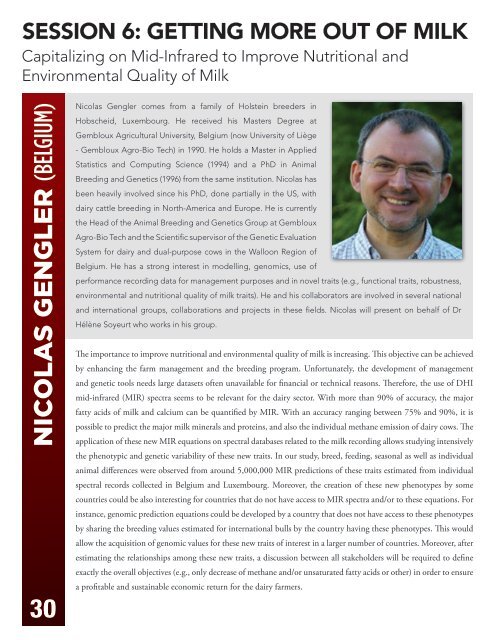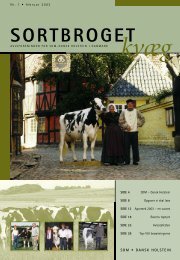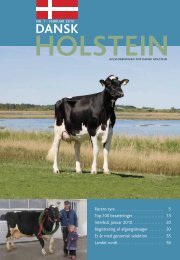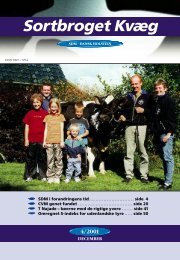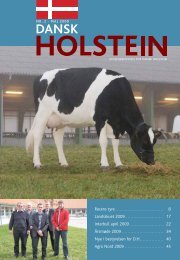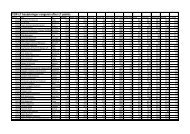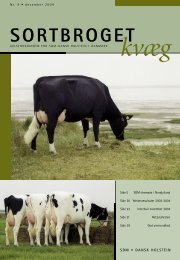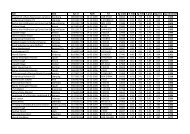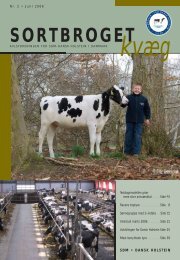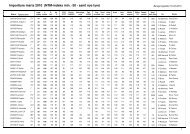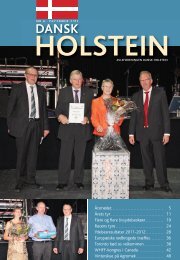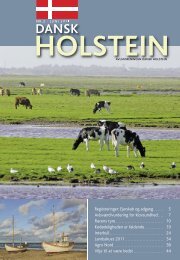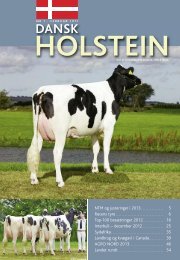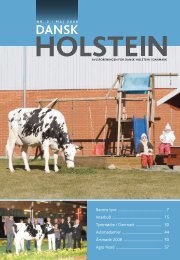2012 WORLD HOLSTEIN CONFERENCE - Dansk Holstein
2012 WORLD HOLSTEIN CONFERENCE - Dansk Holstein
2012 WORLD HOLSTEIN CONFERENCE - Dansk Holstein
Create successful ePaper yourself
Turn your PDF publications into a flip-book with our unique Google optimized e-Paper software.
SESSION 6: GETTING MORE OUT OF MILKCapitalizing on Mid-Infrared to Improve Nutritional andEnvironmental Quality of MilkNICOLAS GENGLER (BELGIUM)30Nicolas Gengler comes from a family of <strong>Holstein</strong> breeders inHobscheid, Luxembourg. He received his Masters Degree atGembloux Agricultural University, Belgium (now University of Liège- Gembloux Agro-Bio Tech) in 1990. He holds a Master in AppliedStatistics and Computing Science (1994) and a PhD in AnimalBreeding and Genetics (1996) from the same institution. Nicolas hasbeen heavily involved since his PhD, done partially in the US, withdairy cattle breeding in North-America and Europe. He is currentlythe Head of the Animal Breeding and Genetics Group at GemblouxAgro-Bio Tech and the Scientific supervisor of the Genetic EvaluationSystem for dairy and dual-purpose cows in the Walloon Region ofBelgium. He has a strong interest in modelling, genomics, use ofperformance recording data for management purposes and in novel traits (e.g., functional traits, robustness,environmental and nutritional quality of milk traits). He and his collaborators are involved in several nationaland international groups, collaborations and projects in these fields. Nicolas will present on behalf of DrHélène Soyeurt who works in his group.The importance to improve nutritional and environmental quality of milk is increasing. This objective can be achievedby enhancing the farm management and the breeding program. Unfortunately, the development of managementand genetic tools needs large datasets often unavailable for financial or technical reasons. Therefore, the use of DHImid-infrared (MIR) spectra seems to be relevant for the dairy sector. With more than 90% of accuracy, the majorfatty acids of milk and calcium can be quantified by MIR. With an accuracy ranging between 75% and 90%, it ispossible to predict the major milk minerals and proteins, and also the individual methane emission of dairy cows. Theapplication of these new MIR equations on spectral databases related to the milk recording allows studying intensivelythe phenotypic and genetic variability of these new traits. In our study, breed, feeding, seasonal as well as individualanimal differences were observed from around 5,000,000 MIR predictions of these traits estimated from individualspectral records collected in Belgium and Luxembourg. Moreover, the creation of these new phenotypes by somecountries could be also interesting for countries that do not have access to MIR spectra and/or to these equations. Forinstance, genomic prediction equations could be developed by a country that does not have access to these phenotypesby sharing the breeding values estimated for international bulls by the country having these phenotypes. This wouldallow the acquisition of genomic values for these new traits of interest in a larger number of countries. Moreover, afterestimating the relationships among these new traits, a discussion between all stakeholders will be required to defineexactly the overall objectives (e.g., only decrease of methane and/or unsaturated fatty acids or other) in order to ensurea profitable and sustainable economic return for the dairy farmers.


